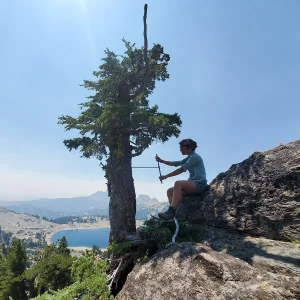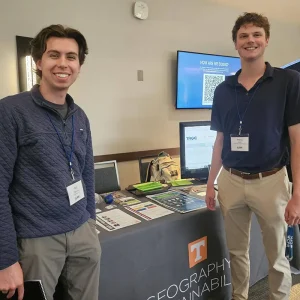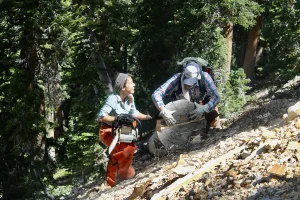Physical Geography
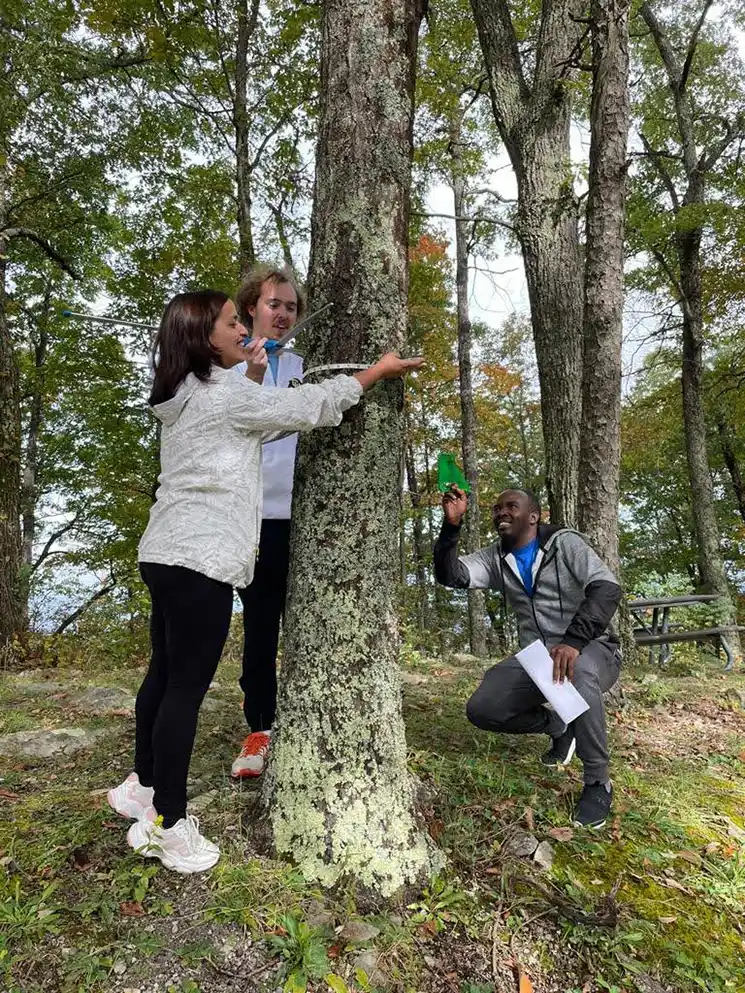
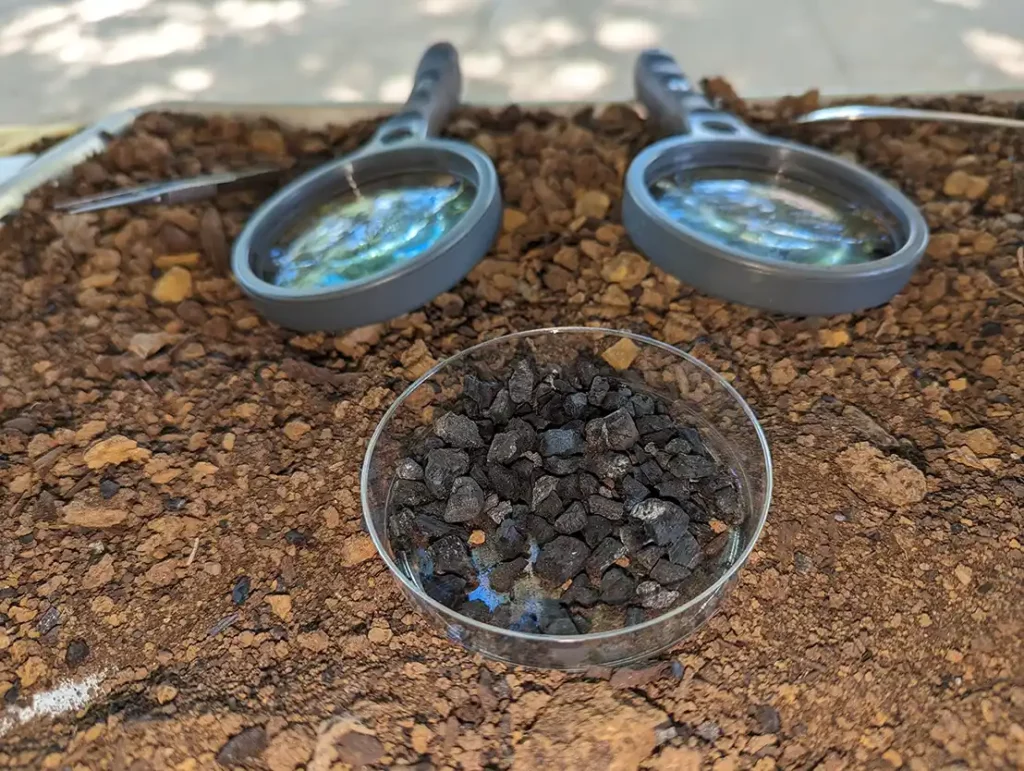
About Physical Geography at UT
The Department of Geography and Sustainability conducts research in multiple areas of Physical Geography: Biogeography, Climate and Environmental History, Geomorphology and Soils, and Human-Environment Interaction and Water Resources.
Biogeography
Biogeography is the study of the changing distributions of species and groups of species in space and time, and the physical, biological, and cultural factors that influence distribution patterns. Two faculty members, Sally Horn, and Liem Tran conduct research related to vegetation patterns and their controls over recent and long time scales. Biogeographical topics that have engaged department faculty and their students include: fire as an influence on vegetation patterns in the southern Appalachians, western United States, circum-Caribbean, and Mozambique; landscape-scale assessment and modeling of vegetation, climate, and human impacts; modern lake environments and biota; the origins and spread of domesticated plants; the biogeographical consequences of the European Conquest of the New World; and the impacts of Quaternary climate change, drought, and human activity on plants and vegetation across North and South America. These projects make use of the Laboratory of Paleoenvironmental Research, and other department laboratories.
Climate and Environmental History
Research on paleoclimate and paleoenvironments contributes to answering fundamental questions about the functioning of Earth’s climate system, “natural” disturbance regimes in ecosystems, and the role of humans in changing the environment, and has important applications in designing conservation and land-management plans. Unraveling the past history of world environments also improves our knowledge of future global change. The University of Tennessee Department of Geography has a strong program of research involving the reconstruction of past environmental conditions—climate, vegetation, fire, ecosystem disturbances, and human activity—from natural archives that include tree rings, soils, and lake sediments. Two faculty members (Sally Horn and Yingkui Li) and their students are active in paleoclimate and paleoenvironmental research funded by the National Science Foundation and a variety of other agencies. The department has world-class laboratories for the study of tree rings (under the direction of Sally Horn) and for cosmogenic nuclide dating and analyses of pollen, charcoal, and other proxy indicators in sediments and soils (Laboratory of Paleoenvironmental Research, directed by Horn and Li). Adjunct faculty member Chad Lane (University of North Carolina Wilmington) brings expertise in isotope geochemistry, and serves on several student committees. The University of Tennessee’s Initiative for Quaternary Paleoclimate Research, currently directed by Horn, is housed in Geography (http://web.utk.edu/~cqpr/), and faculty collaborate with colleagues in Earth and Planetary Sciences, Anthropology, and Ecology and Evolutionary Biology in studies of past climate and environment from natural archives.
Geomorphology and Soils
Geomorphology is the study of landforms and the processes that shape them. Soils are byproducts and archives of landform evolution as well as regulators and recorders of surface and near-surface environmental conditions. Four faculty members, Carol Harden, Liem Tran, Yingkui Li, and Sally Horn, conduct research in process geomorphology (fluvial, hillslope, glacial) and/or study soil processes or soils as archives of previous environmental conditions. Research themes have included soil erosion, soil-water relations, sediment linkages between land and stream, glacial history, cosmogenic isotope nuclide dating of landforms and sediments, paleoclimate inferences from paleosols, and fire histories based on soil charcoal. The department has labs equipped to analyze physical characteristics of soils and sediments, and to prepare samples for cosmogenic nuclide dating. Members of the Geography faculty collaborate with colleagues in Biosystems Engineering and Soil Science, Earth and Planetary Sciences, and Civil and Environmental Engineering in research involving geomorphology and sediments.
Human-Environment Interaction and Water Resources
Landscapes change as human activities change or persist over time. These dynamics, in turn, affect decisions about land use and environmental management. Liem Tran, Yingkui Li, and their students conduct research to identify, characterize, and model environmental effects of human activity and land-use change. Much of their research focuses on water resources, and on surface hydrology, drought, water quality, and watershed dynamics at scales from headwater catchments to integrated regional assessment. They work with local agencies, including TVA (Tennessee Valley Authority) and TDEC (Tennessee Department of Environment and Conservation), in field-based and model-based studies of local water-related issues. Dr. Liem Tran developed a framework called Regional Hydrologic Modeling for Environmental Evaluation (RHyME2) for hydrologic modeling across scales. Tran works with the EPA’s Regional Vulnerability Assessment program to model regional-scale environmental conditions, anticipate future issues, set management and ecosystem protection priorities, and proactively assess decisions that may involve tradeoffs. Dr. Yingkui Li has focused his water-related research on the Tibetan Plateau and Central Asian highlands. Geographers collaborate in interdisciplinary research on water resources through the Water Resources Research Center and the Watershed Faculty group at The University of Tennessee.
AVAILABLE PROGRAMS
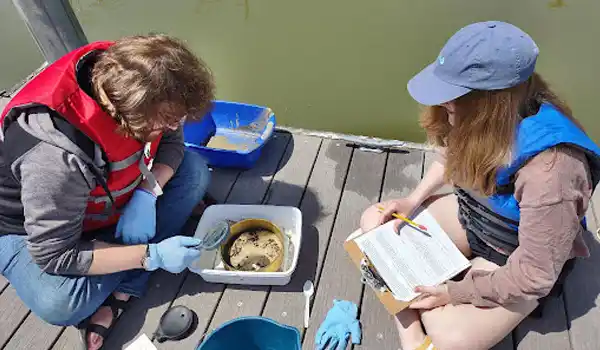
Geography Major, BA – Climate & Climate Change Concentration
The Climate and Climate Change Concentration provides students with the knowledge necessary to understand past, present, and future global climate patterns and trends. Courses focus on understanding the foundations of global climate patterns, how climate has changed through time, and how climate change has affected people, plants, and animals, the landscape, and natural hazards. Students in this concentration will gain skills in assessing past climate change through proxy records, understanding current weather and climate patterns, and evaluating when and how much climate can be expected to change in the near and far future.

Geography Major, BA – Landscapes & Environmental Change Concentration
The Landscapes and Environmental Change concentration focuses on understanding how landscape and environmental changes, hazards, and disasters have altered the earth’s surface and impacted human populations and societies. Some key questions addressed in the courses in this concentration concern the role humans have played in facilitating landscape and environmental changes. The students completing this concentration will be poised for careers in academia and jobs associated with environmental management and consulting, landscape design and planning, ecological and hazards risk assessment, water resources management, and others.
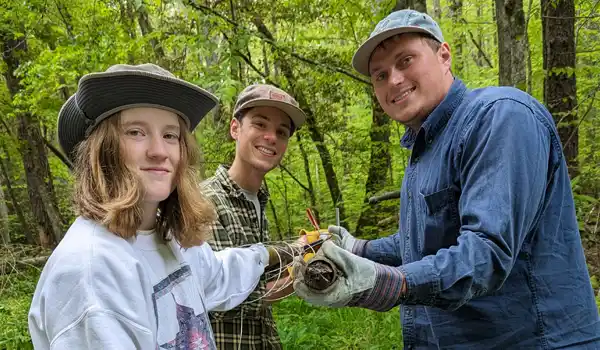
Climate Change Minor
The Climate Change minor provides students with the knowledge necessary to understand past, present, and future global climate patterns and trends. Courses focus on understanding the foundations of global climate patterns, how climate has changed through time, and how climate change has affected people, plants, and animals, the landscape, and natural hazards.
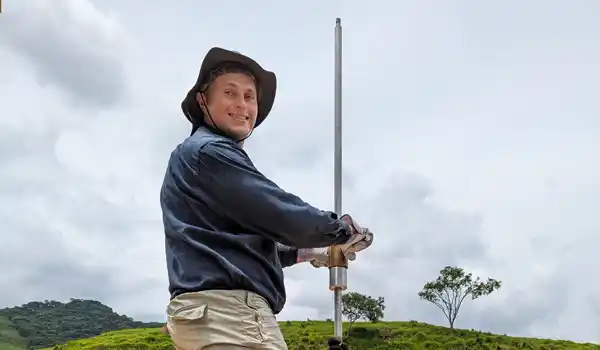
Broadcast Meteorology Minor
The Broadcast Meteorology minor is an interdisciplinary program between the Department of Geography and the School of Journalism and Electronic Media. Students will learn about meteorology, climatology, and weather forecasting, and develop skills to research, write, produce, and effectively deliver stories on camera.

Geography Minor
The Geography minor reflects the discipline’s three main areas—human geography, physical geography, and spatial analysis. The department’s courses allow students to explore the linkages between human activities and natural systems. Students taking geography courses should develop factual knowledge, critical thinking, and analytic skills. Training in geography allows students to know where things are located, why they are located where they are, how and why places differ, how human activity shapes and is shaped by the natural environment, and how to analyze human-environment interactions. A minor in geography consists of 15 hours of geography courses at the 300 level or above. Geography 490, 491, 492, 493 may not be counted toward the minor without departmental permission.
“Geography and supporting technologies like Geographic Information Systems (GIS) contribute to all aspects of our world, including natural resources and infrastructure.”
—Ian Feathers, UT Geography Alum and Solution Engineer, Geodesign and Facilities Division, at Esri
Physical Geography Faculty

Kelsey Ellis
Professor and Director of the Institute for Climate and Community Resilience
Specialties: Climatology and meteorology.

Liem Tran
Professor and Associate Dean for Academic Programs
Specialties: Physical and environmental geography; spatial data science; GIS/geospatial analysis; decision-making science (focus on human-environment interactions); artificial intelligence techniques.

Dimitris Herrera
Assistant Professor
Specialties: Hydroclimate variability and extremes, land-atmosphere interactions, climate modeling

Hannah Herrero
Associate Professor and Director of Sustainability
Specialties: Remote Sensing, Human-Environment Interactions, Conservation, Savanna Science, Africa, Land Change Science, Physical Geography

Sally Horn
Chancellor’s Professor
Specialties: Quaternary environments, biogeography, prehistoric impacts on the environment, fire history and ecology.

Matthew Kerr
Teaching Associate Professor
Specialties: Quaternary environments, prehistoric human-environment interactions, tree-ring science, isotope geochemistry, archaeological chemistry.

Karen E. King
Assistant Professor
Specialties: Dendrochronology, paleoclimate, biogeography, forest ecology, fire-climate interactions.

Yingkui Li
Professor
Specialties: Geomorphology and paleo-climate reconstruction, Cosmogenic nuclides, LiDAR, GIS/spatial analysis, Tibetan Plateau and Tian Shan

Anna Marshall
Assistant Professor
Specialties: fluvial geomorphology, water resources, river restoration, natural hazards, field methods

Mayra Román-Rivera
Teaching Assistant Professor
Specialties: Coastal Geomorphology, Coastal Management, Remote Sensing and GIS Applications of Coastal Environments

Nicholas Sokol
Lecturer
Specialties: Applied Climatology, Data Science, Environmental Modeling, Food, Energy, and Water (FEW)

Jack Swab
Assistant Professor
Specialties: Critical Cartography/GIS, Health Geography, Geographic Thought
Publication Board
Journal of Paleolimnology
Lane, C.S., Horn, S.P., Mora, C.I, Orvis, K.H., Finkelstein, D.B. 2011. Sedimentary Stable Carbon Isotope Evidence of Late Quaternary Vegetation and Climate Change in Highland Costa Rica. Journal of Paleolimnology 45, 323–338.
Journal of Hydrology
Tran, L., O’Neill, R.V. 2013. Detecting the effects of land use/land cover on mean annual streamflow in the Upper Mississippi River Basin, USA. Journal of Hydrology, 499:82–90
Quaternary Research
Lane, C.S., Horn, S.P., Orvis, K.H., Thomason, J.M. 2011. Oxygen Isotope Evidence of Little Ice Age Aridity on the Caribbean Slope of the Cordillera Central, Dominican Republic. Quaternary Research 75, 461–470.
Palynology
Caffrey, M.A., Horn, S.P. 2013. The use of lithium heteropolytungstate in the heavy liquid separation of samples which are sparse in Pollen. Palynology 37, 143-150.
Journal of Quaternary Science
Li, Y.K., Liu, G.N., Kong, P., Harbor, J., Chen, Y.X., Caffee, M.W., 2011. Cosmogenic nuclide constraints on glacial chronology in the source area of the Urumqi River, Tian Shan, China. Journal of Quaternary Science 26, 297-304.
Applied Geography
Charrier, R., Li, Y.K., 2012. Assessing resolution and source effects of digital elevation models on automated floodplain delineation: a case study from the Camp Creek Watershed, Missouri. Applied Geography 34, 38-46.
International Journal of Wildland Fire
Harley, G.L., Grissino-Mayer, H.D., Horn, S.P., 2013. Fire history and forest structure of an endangered subtropical ecosystem in the Florida Keys, USA. International Journal of Wildland Fire 22, 394–404.
Tree-Ring Research
Harley, G.L., Grissino-Mayer, H.D., Horn, S.P., 2011. The Dendrochronology of Pinus elliottii in the Lower Florida Keys: Chronology Development and Climate Response. Tree-Ring Research 67(1), 39–50.
Geomorphology
Harden, C.P., 2013. Geomorphology in context: Dispatches from the field. Geomorphology 200, 34–41.
